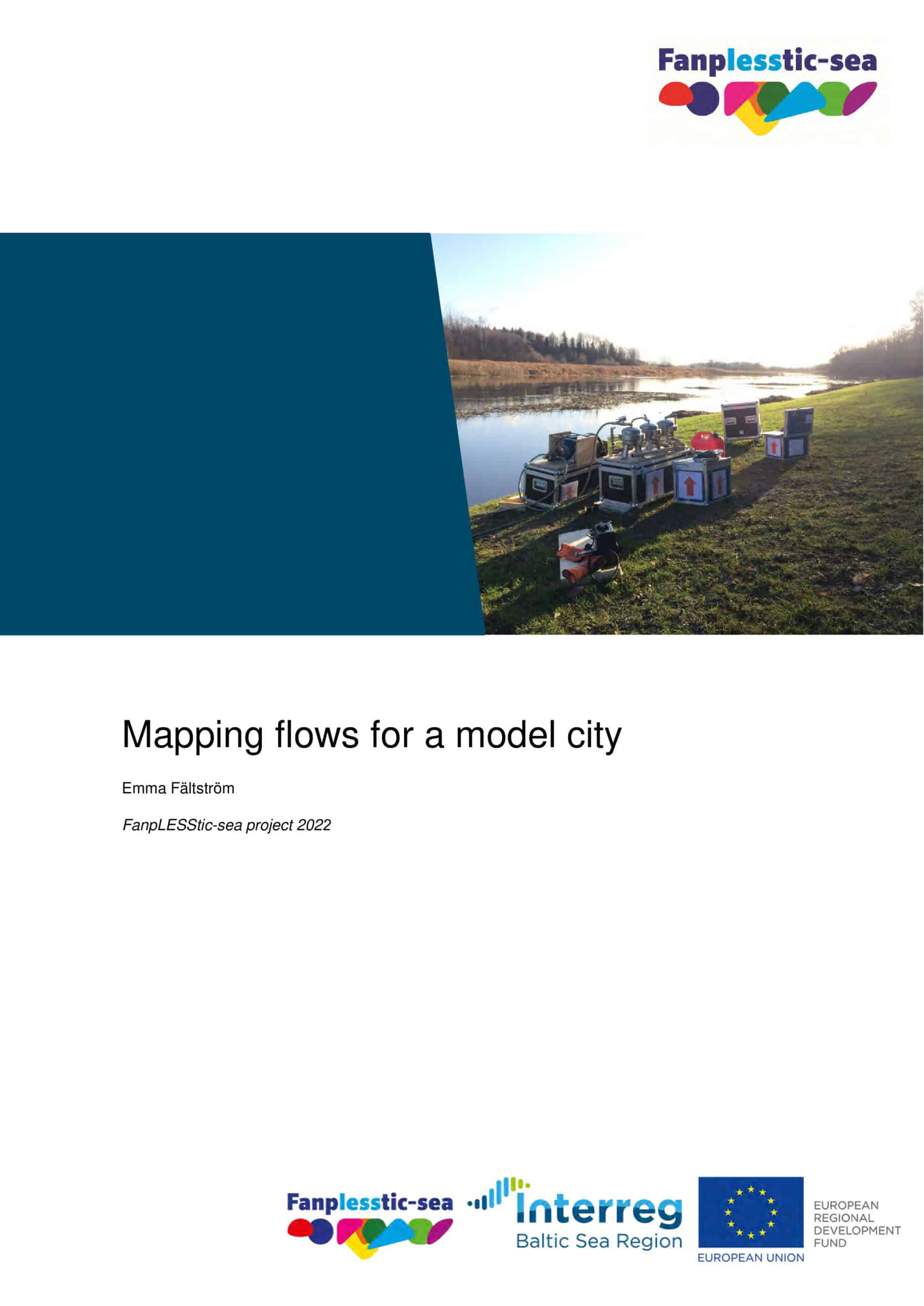FanpLESStic-sea
Microplastic pollution
Microplastics are very small pieces of plastic, coming from e.g. cosmetics, clothes and bottles, that pollute the Baltic Sea and drinking water. The extent of pollution and consequences for the natural ecosystem have not been yet examined. There is also a knowledge gap on possible removal technologies and a lack of policy framework to support prevention and removal activities.
Tracking the sources of microplastics as a means of preventing microplastics from entering the sea
FanpLESStic-sea project involved partner organisations in eight countries around the Baltic Sea, i.e. Sweden, Finland, Norway, Denmark, Poland, Latvia, Lithuania and Russia. It worked with municipalities, water utilities and associations, national policy makers and research communities. The project improved the knowledge where microplastics came from and what their transport pathways were. The project also set up a model to understand and better visualize the microplastic pathways. New technologies can prevent or reduce microplastic leakage into watercourses. Therefore, the project partners evaluated and piloted methods for filtering microplastics away, removing microplastics from stormwater, and implementing sustainable drainage solutions.
The project also defined innovative governance frameworks to better engage decision makers and other relevant players in implementing cost-effective methods to reduce microplastics. These included locally adapted investment proposals and plans for each partner’s region.
Budgets
in numbers
-
2.97MillionTotal
-
2.05MillionErdf
-
0.09MillionEni + Russia
-
0.13MillionNorway
Achievements
Measures to prevent and mitigate the pollution from microplastics
The project combined strategic measurements with source estimates and visualised the flows of microplastics for a model city in the Baltic Sea region. The largest source of microplastics to urban waters were tire wear particles. For wastewater, the highest load came from laundry. Tap water, dust, and roof runoff, all made a small contribution to the overall load to urban waters. The partners concluded that emissions to the receiving water were higher from stormwater than wastewater. They proposed several measures to prevent and mitigate the pollution from microplastics. Preventive measures were those that avoided the introduction of microplastics to the system (ban on microbeads in personal care and cleaning products) and those that avoid introduction to the urban waters (more efficient solid waste management). If such measures for wastewater were to be implemented there was the potential to cut emissions to the wastewater treatment facilities by 30-50%. The partners also suggested that there was a need for more research on stormwater regarding the techniques that would be most efficient for the treatment of microplastics and tire wear particles.
Solutions in action
The partners implemented several pilots to assess the effectiveness of existing water treatment installations as well as emerging innovative solutions. In the pilot in Kouvola, Finland, the partners built an organic common reed filter for cleaning melted snow removed from urban streets. The harvested common reed proved to be a versatile and cost-effective filtering material for stormwaters. Such snow melting and filtering technology solves the urgent problem of dumping urban snow into the sea. Another pilot was implemented in Gdansk, Poland, and tested an artificial wetland for cleaning wastewater from households and industries. By adapting an existing pilot-scale constructed wetland system (from another Interreg BSR project), the Gdansk water utilities assessed its ability to remove also microplastics from the final effluent. The initial results of solids, organic matter, and nutrient removal were promising and offered the prospect of a satisfactory solution also for microplastics, after the adaptation and development of the tested pilot station.
Outputs
Review of existing policies and research related to microplastics

Mapping microplastics flows for a model city

Existing and emerging technologies for microplastics removal

Project Stories
Partners
Sweden Water Research (SWR)
- TownMalmö
- RegionSkåne län
- CountrySweden
- RepresentativeMarinette Hagman
- Phone
- E-Mail
- Web
Luleå University of Technology (LTU)
- TownLuleå
- RegionNorrbottens län
- CountrySweden
- RepresentativeHeléne Österlund
- Phone
- E-Mail
- Web
Aalborg University (AAU)
- TownAalborg Ø
- RegionNordjylland
- CountryDenmark
- RepresentativeJes Vollertsen
- Phone
- E-Mail
- Web
Natural Resources Institute Finland (Luke)
- TownHelsinki
- RegionHelsinki-Uusimaa
- CountryFinland
- RepresentativeJyri Maunuksela
- Phone
- E-Mail
- Web
Baltic Marine Environment Protection Commission - Helsinki Commission (HELCOM)
- TownHelsinki
- RegionHelsinki-Uusimaa
- CountryFinland
- RepresentativeMarta Ruiz
- Phone
- E-Mail
- Web
Latvian Institute of Aquatic Ecology (LIAE)
- TownRiga
- RegionRīga
- CountryLatvia
- RepresentativeIeva Putna-Nimane
- Phone
- E-Mail
- Web
Gdanks Water Utilities Ltd. (GIWK)
- TownGdansk
- RegionGdański
- CountryPoland
- RepresentativeMonika Piotrowska - Szypryt
- Phone
- E-Mail
- Web
Gdansk Water Ltd. (GW)
- TownGdansk
- RegionTrójmiejski
- CountryPoland
- RepresentativeWojciech Szpakowski
- Phone
- E-Mail
- Web
State Autonomous Institution of the Kaliningrad region "Environmental Center "ECAT-Kaliningrad" (ECAT)
- TownKaliningrad
- RegionKaliningrad Oblast
- Country
- RepresentativeOlga Sheshukova
- Phone
- E-Mail
- Web
Siauliai Chambers of Commerce, Indusrty and Crafts (SCCIC)
- TownSiailiai
- RegionŠiaulių apskritis
- CountryLithuania
- RepresentativeDaiva Jonuskiene
- Phone
- E-Mail
- Web
Salt Lofoten AS (SALT)
- TownSvolvær
- RegionNordland
- CountryNorway
- RepresentativeKjersti Eline Tønnessen Busch
- Phone
- E-Mail
- Web
-
Project managerJesper KönigSweden Water Research
-
Legal representativeHenrik AspegrenSweden Water Research (SWR)
-
Financial managerCarina HertzmanSweden Water Research, SWR
-
Communication managerMalin NydesjöSweden Water Research, SWR



